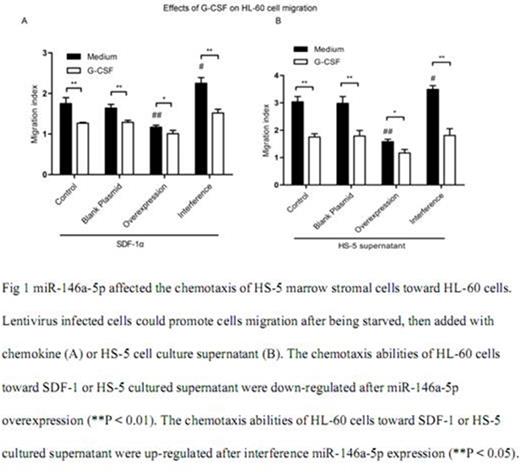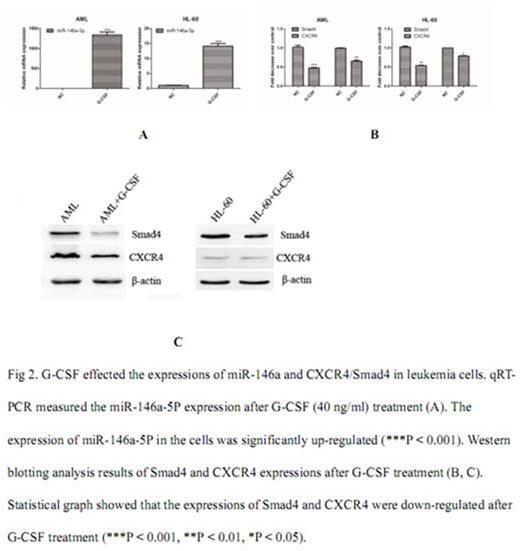Abstract
CAG regimen was widely used in the clinical treatment of acute myeloid leukemia (AML). However, the mechanisms of G-CSF in the CAG regimen remain unknown. For the purpose of better elucidating the function of G-CSF, we evidenced that G-CSF could enhance HL60 and primary leukemia cells proliferation in vitro. Meanwhile, transwell migration experiments demonstrated that G-CSF, similar as the CXCR4 antagonist AMD3100, could remarkably inhibit the chemotaxis of HL60 cells induced by the chemokines released from marrow stromal cells (Fig 1). qRT-PCR and Western blotting results showed that the expression of miR-146a was up-regulated after G-CSF treatment, while the expression levels of CXCR4 and smad4 were down-regulated (Fig 2). CXCR4 and Smad4 expression levels in miR-146a over expression lentivirus infected HL60 cells were significantly decreased, which manifested the direct or indirect targeted relationship between miR-146a and CXCR4/Smad4. Our qRT-PCR and Western blotting results also showed an involvement of NF-KB in G-CSF induced up-regulation of miR-146a in AML cells. G-CSF activated NF-KB in the cells. Activated NF-KB induced the up-regulation of miR-146a expression. Sanguinarine, an inhibitor of NF-KB significantly inhibited miR-146a expression. We further demonstrated the involvement of NF-KB in the regulation of G-CSF in CXCR4 and Smad4 expression (Fig 3). Our study demonstrated that G-CSF not only could induce resting leukemia cells into proliferation cell cycle, but also could inhibit chemotaxis of leukemia cells. We elucidated the mechanism of G-CSF/NF-KB/miR-146a/CXCR4 signaling pathway in CAG treatment of AML. The expression levels of MiR-146a /CXCR4 /Smad4 may be selected as the clinical markers for CAG protocol choosing.
No relevant conflicts of interest to declare.
Author notes
Asterisk with author names denotes non-ASH members.




This feature is available to Subscribers Only
Sign In or Create an Account Close Modal